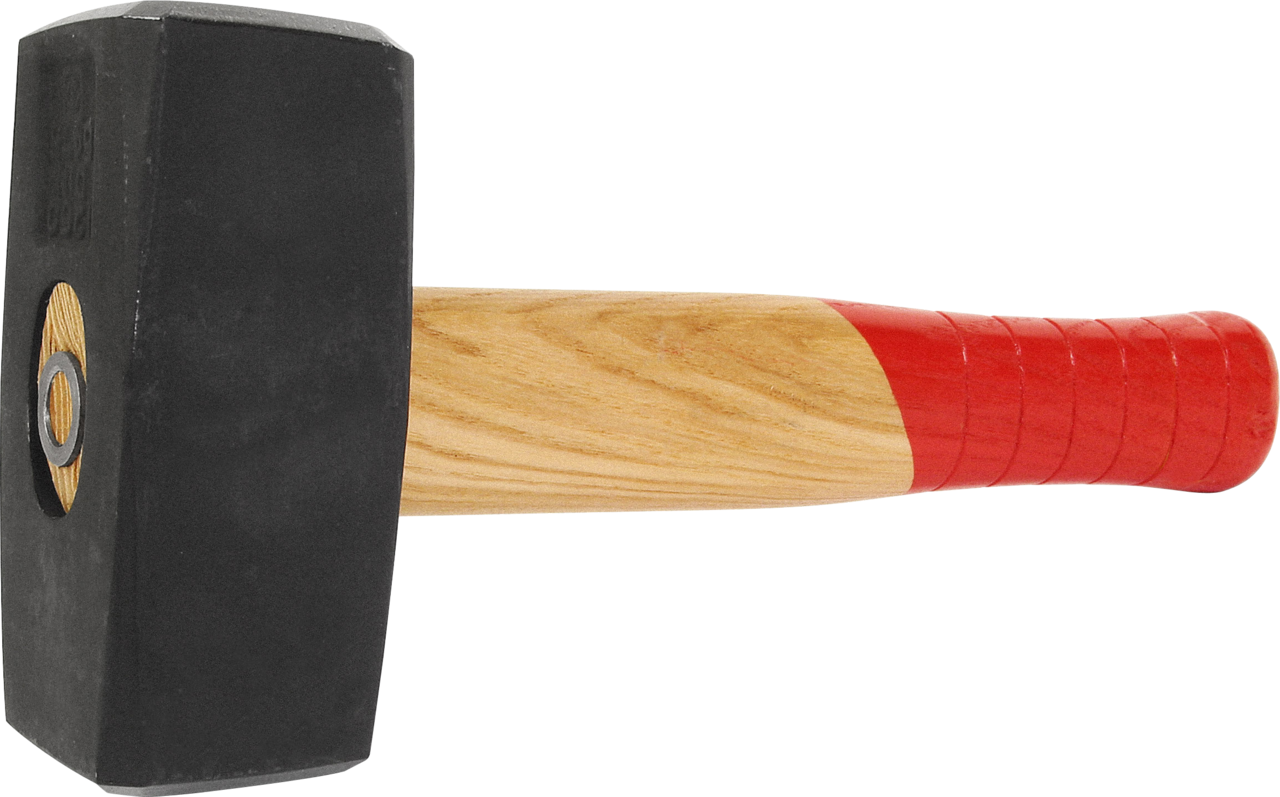
This image has format transparent PNG with resolution 1280x797.
You can download this image in best resolution from this page and use it for design and web design.
hammer PNG with transparent background you can download for free, just click on download button.
A hammer is a tool, most often a hand tool, consisting of a weighted "head" fixed to a long handle that is swung to deliver an impact to a small area of an object. This can be, for example, to drive nails into wood, to shape metal (as with a forge), or to crush rock. Hammers are used for a wide range of driving, shaping, breaking and non-destructive striking applications. Traditional disciplines include carpentry, blacksmithing, warfare, and percussive musicianship (as with a gong).
Hammering is use of a hammer in its strike capacity, as opposed to prying with an secondary claw or grappling with a secondary hook. Carpentry and blacksmithing hammers are generally wielded from a stationary stance against a stationary target as gripped and propelled with one arm, in a lengthy downward planar arc—downward to add kinetic energy to the impact—pivoting mainly around the shoulder and elbow, with a small but brisk wrist rotation shortly before impact; for extreme impact, concurrent motions of the torso and knee can lower the shoulder joint during the swing to further increase the length of the swing arc (but this is tiring). War hammers are often wielded in non-vertical planes of motion, with a far greater share of energy input provided from the legs and hips, which can also include a lunging motion, especially against moving targets. Small mallets can be swung from the wrists in a smaller motion permitting a much higher cadence of repeated strikes. Use of hammers and heavy mallets for demolition must adapt the hammer stroke to the location and orientation of the target, which can necessitate a clubbing or golfing motion with a two-handed grip.
The modern hammer head is typically made of steel which has been heat treated for hardness, and the handle (also known as a haft or helve) is typically made of wood or plastic.
Ubiquitous in framing, the claw hammer has a "claw" to pull nails out of wood, and is commonly found in an inventory of household tools in North America. Other types of hammer vary in shape, size, and structure, depending on their purposes. Hammers used in many trades include sledgehammers, mallets, and ball-peen hammers. Although most hammers are hand tools, powered hammers, such as steam hammers and trip hammers, are used to deliver forces beyond the capacity of the human arm. There are over 40 different types of hammers that have many different types of uses.
For hand hammers, the grip of the shaft is an important consideration. Many forms of hammering by hand are heavy work, and perspiration can lead to slippage from the hand, turning a hammer into a dangerous or destructive uncontrolled projectile. Steel is highly elastic and transmits shock and vibration; steel is also a good conductor of heat, making it unsuitable for contact with bare skin in frigid conditions. Modern hammers with steel shafts are almost invariably clad with a synthetic polymer to improve grip, dampen vibration, and to provide thermal insulation. A suitably contoured handle is also an important aid in providing a secure grip during heavy use. Traditional wooden handles were reasonably good in all regards, but lack strength and durability compared to steel, and there are safety issues with wooden handles if the head becomes loose on the shaft.
The high elasticity of the steel head is important in energy transfer, especially when used in conjunction with an equally elastic anvil.
In terms of human physiology, many uses of the hammer involve coordinated ballistic movements under intense muscular forces which must be planned in advance at the neuromuscular level, as they occur too rapidly for conscious adjustment in flight. For this reason, accurate striking at speed requires more practice than a tapping movement to the same target area. It has been suggested that the cognitive demands for pre-planning, sequencing and accurate timing associated with the related ballistic movements of throwing, clubbing, and hammering precipitated aspects of brain evolution in early hominids.
Here you can download free png images on theme: Hammer PNG images, free picture download